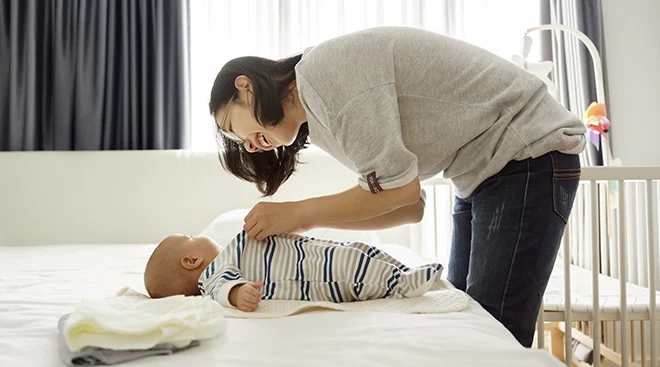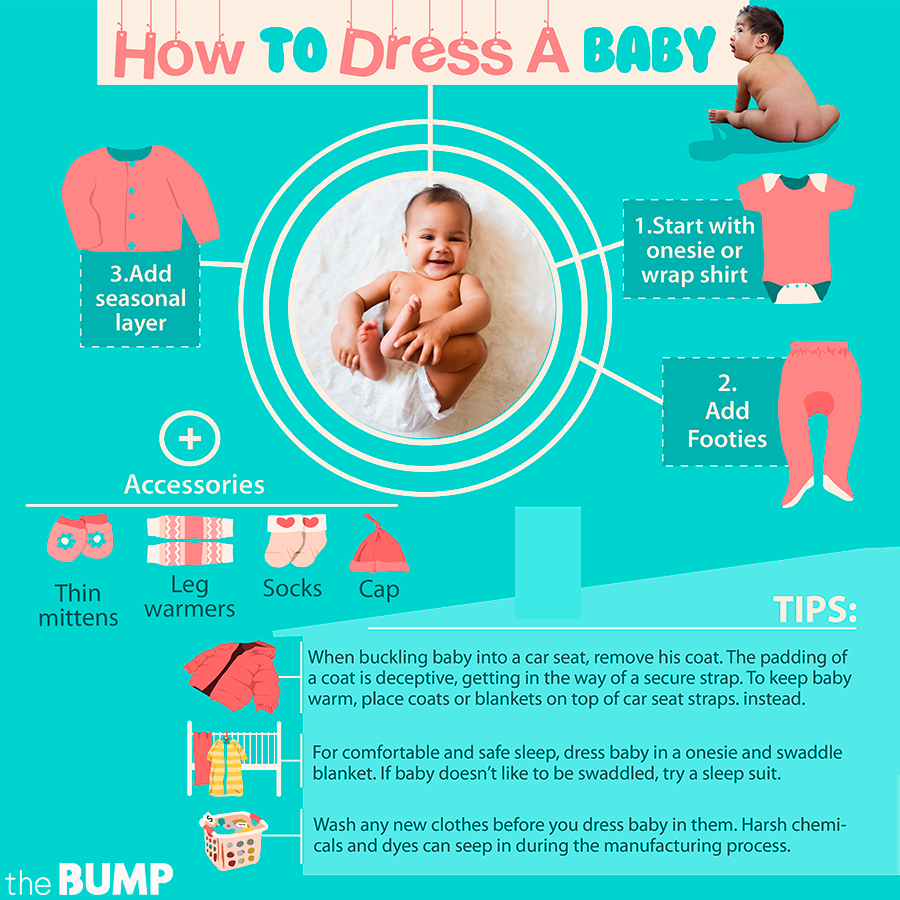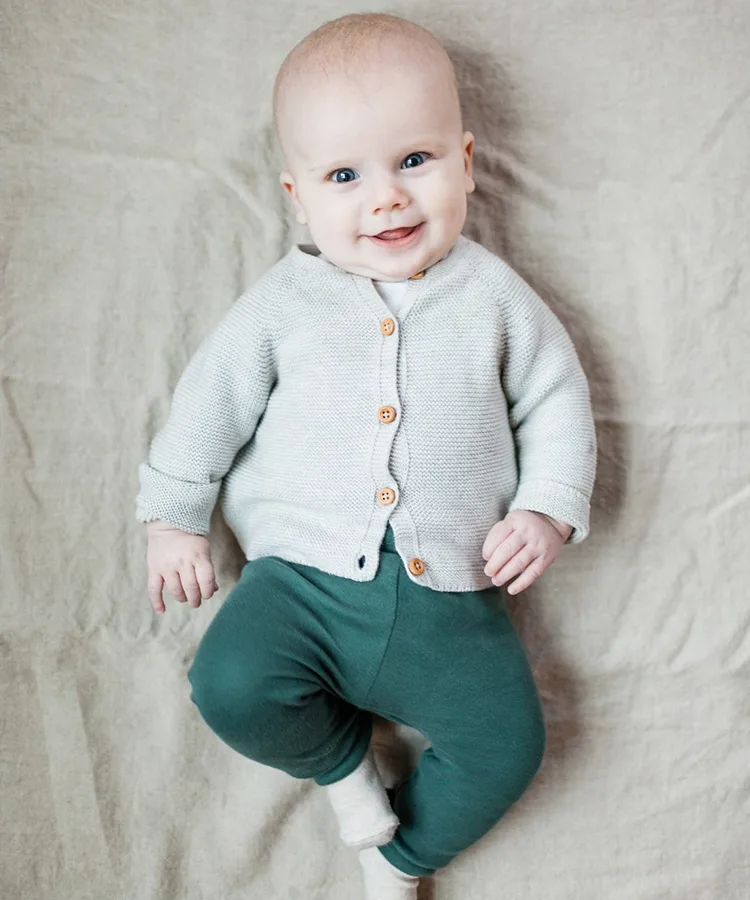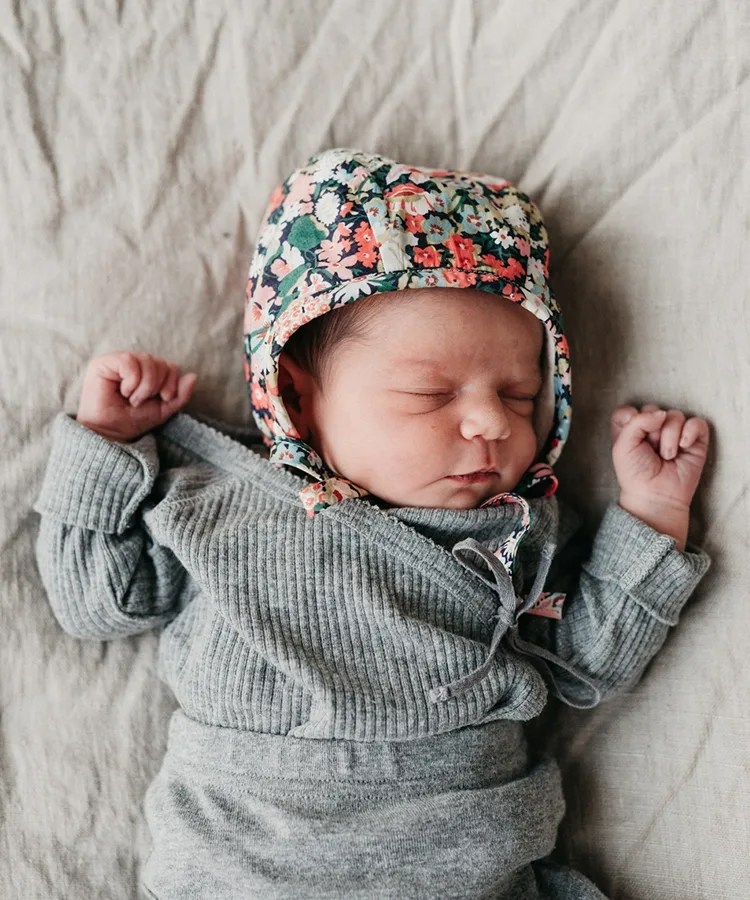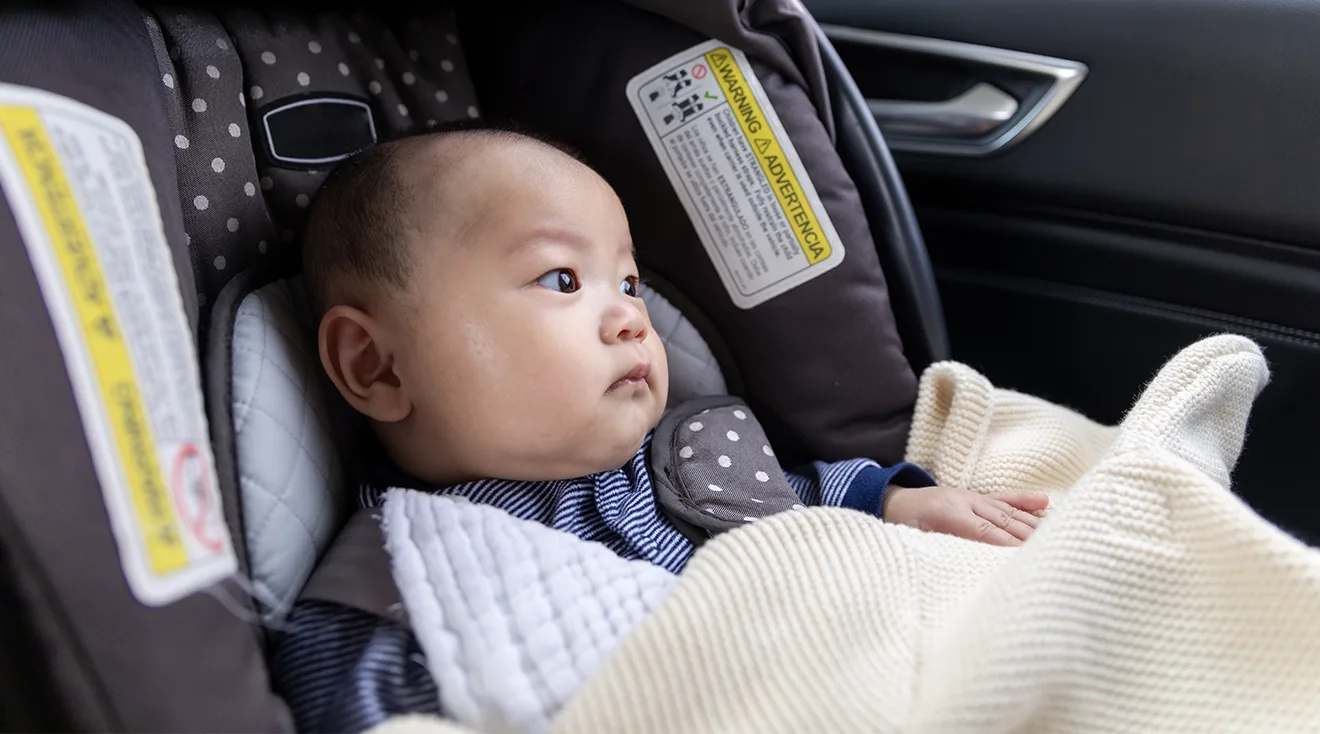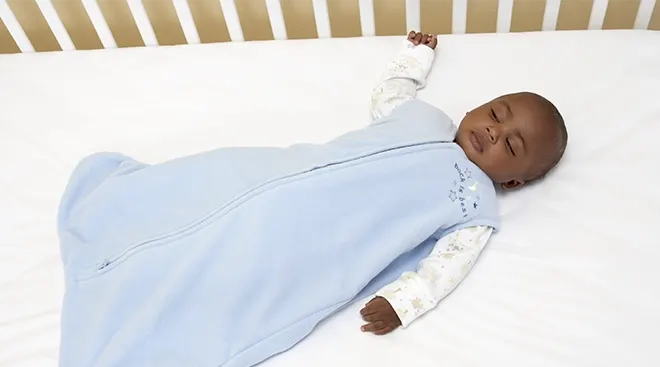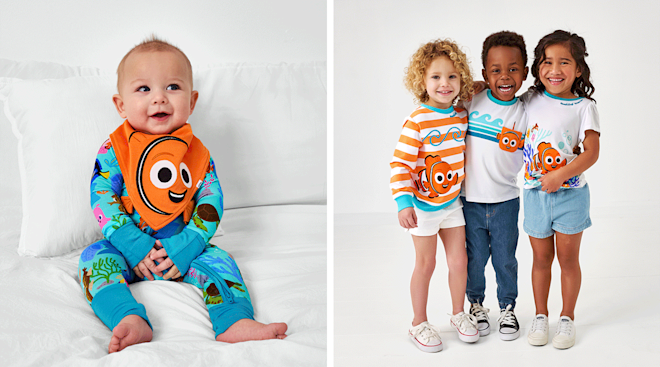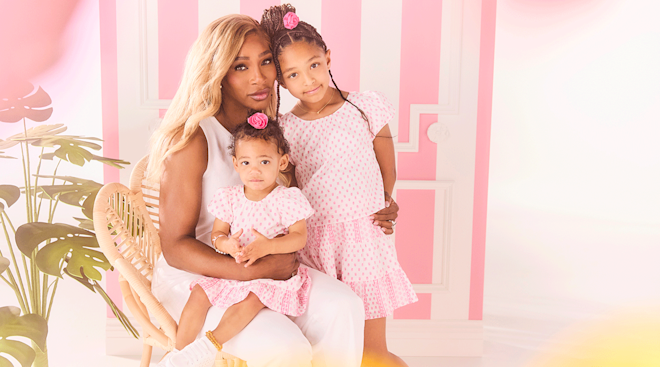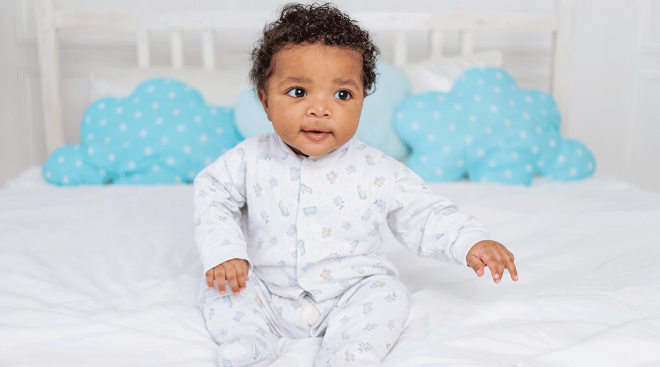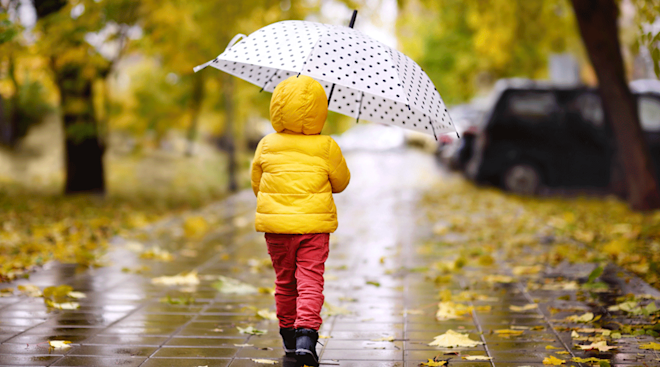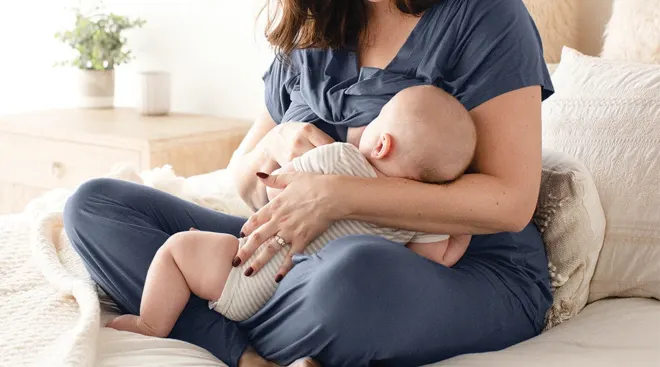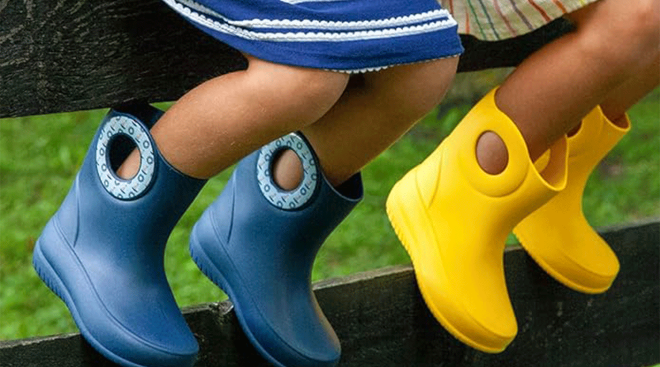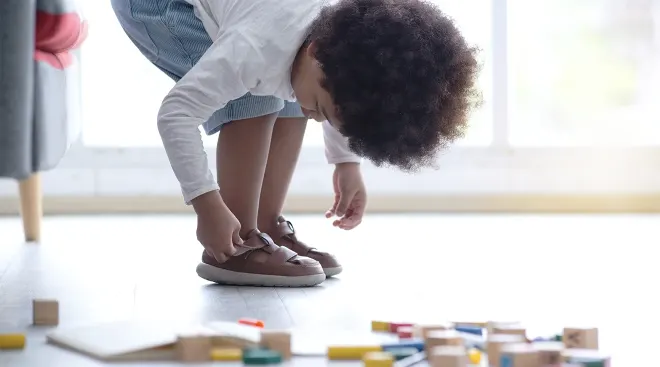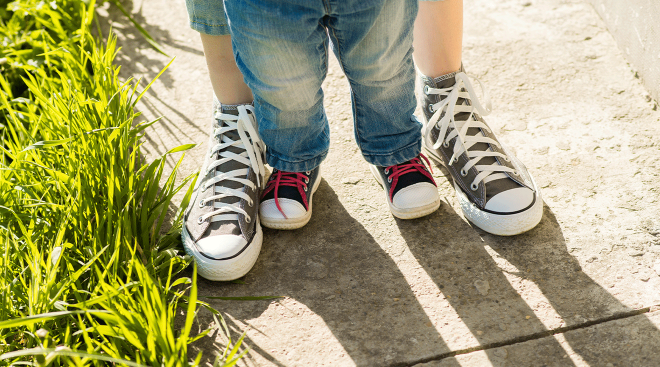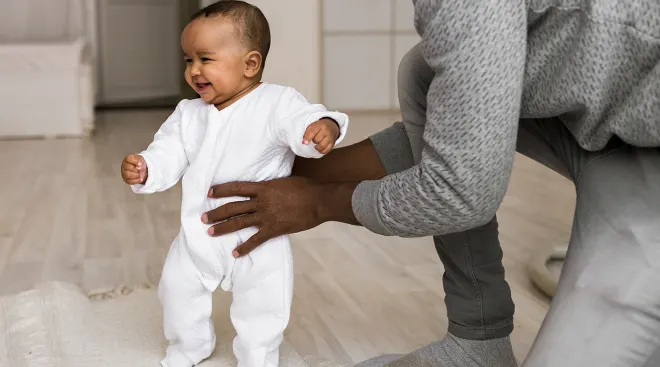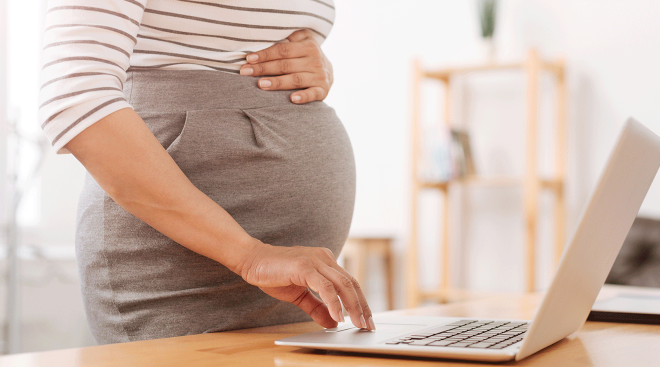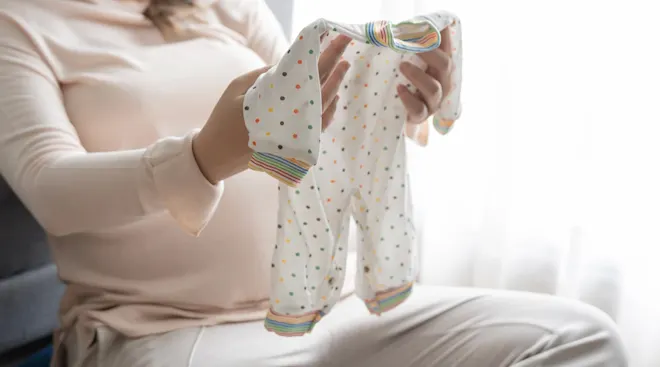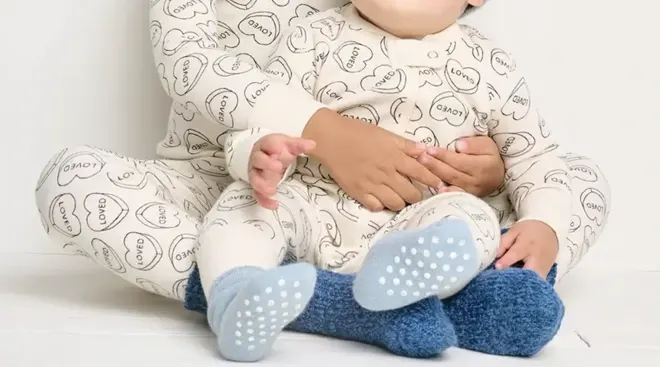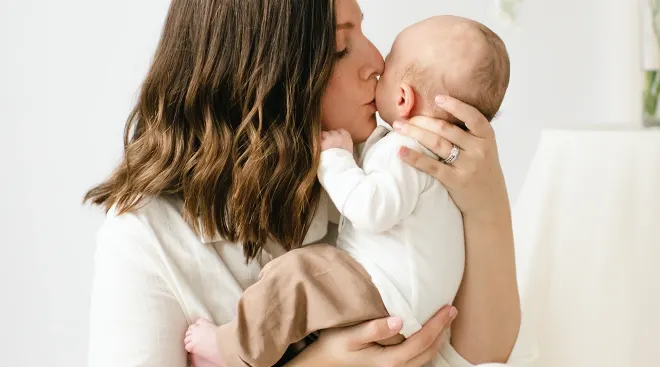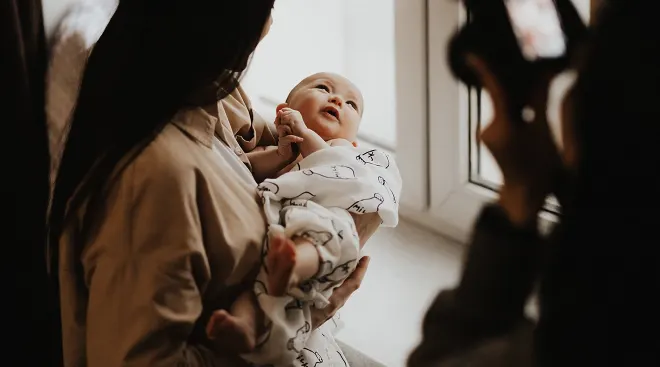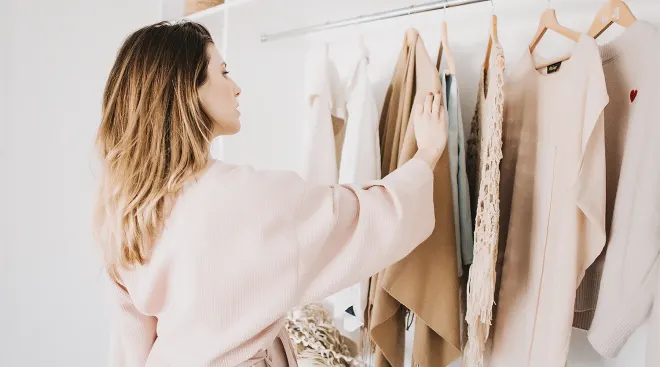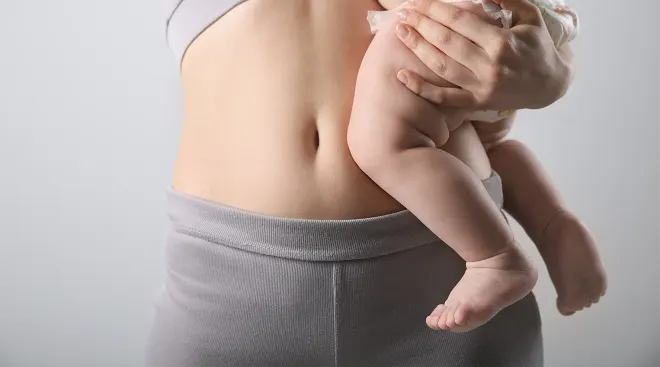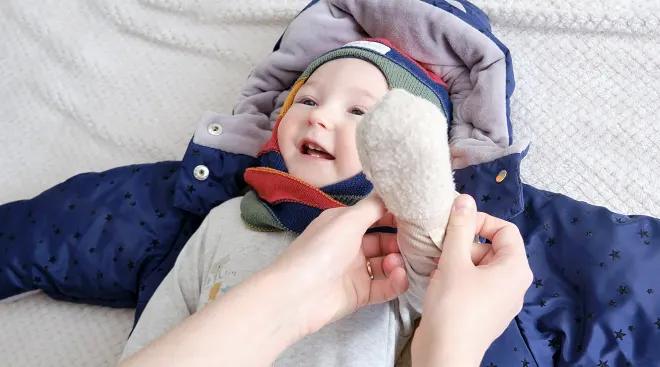How to Dress a Newborn
You may have put lots of thought—and money!—into planning baby’s wardrobe before they arrive. But the truth is babies don’t need a huge variety of outfits for the first few weeks of life. You’ll be too busy figuring each other out and just trying to get through the day (and night) to worry about perfectly matching tops, bottoms, socks and hats. (Don’t worry, there will be plenty of time for adorable matching outfits later, when baby is a little older.) But during those first few weeks, the key is to keep baby safe and comfortable. To help you do exactly that, we’ve put together a few expert tips on how to dress your newborn as you leave the hospital, as well as what to consider in those first few weeks at home.
Dressing a newborn is more about common sense than fashion sense. Follow these basic steps, then improvise from there.
1. Start with the onesie or wrap shirt
Onesies are practically synonymous with baby clothing: They cater to the needs of a tiny human who’s unaccustomed to wearing clothes. Think of these bodysuits as ideal base layers for newborns. “The main benefit is that they’ll stay in place and keep your baby’s back and tummy from being exposed,” says Suzanne Price, founder of children’s clothing retailer Sprout. Plus, the snaps at the bottom mean you don’t have to undress baby completely when you’re changing diapers—which makes the chore easier for parents and less chilly for baby. Another option? A long-sleeve kimono or wrap-style shirt. These especially come in handy during baby’s first days. The shirt, which snaps across the front, doesn’t have to be pulled over your little one’s head—which many babies dislike—and it’s easier on the sensitive umbilical cord stump, which needs air to dry out.
2. Add footies
Footies are pants with built-in feet, which eliminate the need for baby socks or booties. Even the tiniest kids are very adept at kicking off socks, which inevitably get lost somewhere between aisle one and the cashier at the supermarket. As with all baby clothes, it doesn’t hurt to buy sizes that are slightly larger (but still fit comfortably); this way they’ll last a little longer, even as baby’s feet grow. Afterward, if you don’t plan on keeping the footies as hand-me-downs, you can snip the foot portion off and hem the bottom, turning them into pants.
If you love the pants-and-socks combo, though, we get it—how could you not resist those basketball-shoe or MaryJane socks? Just keep an eye on them, or (if you don’t mind paying for a sock accessory that costs more than the socks themselves) try Sock Ons, which fit over baby’s foot to keep the sock in place. But remember: Before putting those teensy socks into your washing machine, place them in a zippered mesh lingerie sack. (Socks are small enough to get spun out of the drum and seize up the washing machine. We call it the Case of the $250 Sock—the approximate cost for the repairman to fix the broken machine.)
3. Add layers
The season is going to dictate how many layers baby wears and how thick those layers should be. In summer, a lightweight onesie is all you need, says Melanie Smith, DO, a pediatrician with Pediatrics East in Arlington, Tennessee. For newborns, she suggests long sleeves—they help keep baby cozy, as well as protect them from accidental scrapes and the environment in general (as their immune system is so brand new). In winter, “most babies are comfortable in whatever adults are wearing, plus another layer,” Smith says. However, don’t go by what mom has on—her fluctuating hormones may affect how she senses temperature. So if people are comfortable inside with a shirt, then add a tee on top of the onesie. If people are wearing sweaters, then add a soft sweater over that onesie and tee. Cardigans (as opposed to crew or V-necks) with snaps (as opposed to buttons or zippers) make it easy to shed layers when needed. Take note: Many people tend to overbundle babies in the winter, so don’t overdo the layers. Signs that baby might be too hot include flushed cheeks, fussiness or a sweaty back.
4. Consider accessories
- Soft skull caps (or actual hats, if it’s winter) keep baby warm, especially in those early weeks. Babies lose a lot of heat through their heads, says Smith.
- Thin mittens prevent babies from scratching themselves.
- Socks are helpful for newborns if they’re not wearing footies—especially if you’re venturing outdoors. Babies have poor circulation at first, Smith says, and their feet are often colder than ours.
- Leg warmers can be considered sweaters for baby’s legs. Slip them over footies or pants if you’re strolling out in the cold. They also keep baby’s socks up.
5. Top it all off with a blanket
Of course, a blanket isn’t necessary when baby is up and about and practicing their tummy time—babies under one should never sleep in their crib with a blanket. But if they’re nursing, in a stroller or being carried out to the car, a blanket will keep them feeling cozy and protected. Also, Smith says, “any baby leaving the hospital needs to be covered up, more so [to keep away] germs.” In summer, a light blanket will do. Opt for something thicker as the days get chillier. Whatever the case may be, wrap baby up from toes to neck, and secure it so it doesn’t end up flapping in their face. If you’ll be out and about for a while in winter, consider putting baby in a coat, if you have one. Otherwise dress baby in extra-warm layers and extra-thick baby bunting or (if you’re strolling) a toasty foot muff.
Fitting newborns into car seats isn’t too hard when the weather is mild. Usually all they need to wear is a onesie with a light blanket placed over them once they’ve been buckled in. A pair of pants or shorts for hot days can help provide an extra layer of protection against pinching from the buckle.
But what about during winter, when baby is outfitted in their lovely new puffy snowsuit? “There are strong recommendations about not using any puffy attire in the car seat,” Price says. That’s because the extra air between baby and the coat could be dangerous during a car accident. “It’s important to take it off and put a blanket on top of the straps,” she says.
“When a baby is sleeping, less is going to be more,” Smith says. Because babies can wriggle out of their mittens and hats in bed, these could pose a risk for sudden infant death syndrome (SIDS). All they need to wear is a onesie underneath their swaddling blanket, if they like to be swaddled. You can also find long-sleeve onesies with built-in mittens, if they tend to scratch themselves. If baby doesn’t like to be swaddled, try a sleep sack.
While Smith says not to stress about buying clothes made purely from organic materials, natural fibers like cotton or bamboo are much more breathable and can help with baby’s temperature regulation. She also urges parents to throw new clothes in the machine before wearing, since harsh chemicals and dyes can seep in during the manufacturing process.
Since you’re likely not sure whether baby has sensitive skin out of the gate, Price recommends saving the brightly dyed outfits decorated with character designs for older babies. “When they’re new and you’re hardly leaving the house, they don’t need the adorable outfit with Mickey Mouse on it,” she says. “Plain, soft clothing is ideal.”
Please note: The Bump and the materials and information it contains are not intended to, and do not constitute, medical or other health advice or diagnosis and should not be used as such. You should always consult with a qualified physician or health professional about your specific circumstances.
Plus, more from The Bump:
Suzanne Price is the founder of children’s clothing retailer Sprout. Prior to launching the brand in 2009, Price worked as a research analyst and spent several years studying organic products and how chemicals affect the human body. She received her MBA from Columbia Business School.
Melanie Smith, DO, is a pediatrician with Pediatrics East in Arlington, Tennessee. She received her medical degree from Lincoln Memorial University–DeBusk College of Osteopathic Medicine in East Tennessee, and completed her pediatric residency at Le Bonheur Children's Hospital in Memphis, Tennessee.
Learn how we ensure the accuracy of our content through our editorial and medical review process.
Navigate forward to interact with the calendar and select a date. Press the question mark key to get the keyboard shortcuts for changing dates.
































